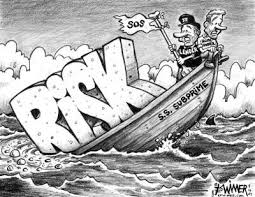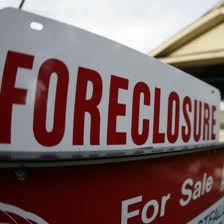Critique the role of leadership decision-making in the subprime loan financial crisis.
The role of leadership in regards to the decision-making in the subprime loan financial crisis was tremendous. Before the loans were approved they had to go through several layers of reviews. Unfortunately, the subprime mortgage crisis’s created a new and increased source of income for banking and financial institutions (Ross, 2011). Although, the key decision makers knew that this type of predatory lending was unethical they were willing to take the risk (Thiel, 2012). The financial windfall was the driving factor to look the other way which is also known as the “Golden Rule” (Watkins, 2011). The leaders were fully aware that most of the subprime loans that were approved fell below the normal standard for approving loans. They viewed money as a means to procure the goods and services necessary to live a virtuous life” (Watkins, 2011). As a result, plenty of loans were approved and consequently one to two years later these same loans were in a delinquent status or in foreclosure. Unfortunately, in business when millions of dollars are at steak many business owners, leaders, and financial institutions are willing to look the other way to reap the rewards of financial gratification. One has to wonder is greed a logistical argument for unethical behavior (Thiel, 2012)? While the answer is obviously “NO” why do many take the risk, when they know the consequences could be severe?
Evaluate subprime loans with the notion of social responsibility. Compare and contrast the resulting consequences for these actions.
The way the banks and financial institutions approved subprime loans was unethical and social irresponsible. The art of knowing and acting on the right and wrong principle, is the difference between being ethically responsible or acting irresponsible to pursue a financial gain on behalf of another (Watkins, 2011). “Ethical misconduct occurs because leaders today possess less ethical value” (Thiel, 2012 pg. 1). The callousness of financial institutions resulted in severe consequences which included defaulted loans, foreclosed properties, loss of revenue, reduction in workforce, and some went out of business. Individuals also had a moral and ethical responsibility in the subprime loan and the process. Some individuals allowed their desire to have the American Dream of being a homeowner, caused them to make some unethical statements regarding their finances and income. In an effort to gain favor and obtain a home loan. While this method of deceit worked at the time it ultimately cost them their home in the end due to foreclosures. Consequently, everyone lost due to this get quick rich scheme for the banks and financial institutions, and for individuals to have what they couldn’t afford at all cost. “In today’s home mortgage environment, mortgage lenders are being very careful and selective in the loan underwriting process in order to avoid additional mortgage delinquencies and foreclosures, and most institutional buyers of mortgage-backed securities are demanding and limiting purchases to high quality mortgage loans” (Rose, 2011, pg. 2).
References
Doms, M., Furlong, F., & Krainer, J. (2007). House prices and subprime mortgage delinquencies. Federal Reserve Bank of San Fransico. FRBSF Economic Letter. 2007-14. Retrieved from http://www.frbsf.org/economic-research/publications/economic-letter/2007/june/house-prices-subprime-mortgage-delinquency/el2007-14.pdf
Gilbert, J. (2011). Moral Duties in Business and Their Societal Impacts: The Case of the Subprime Lending Mess. Business & Society Review (00453609), 116(1), 87-107. doi:10.1111/j.1467-8594.2011.00378.x
Makarov, I., & Plantin, G. (2013). Equilibrium Subprime Lending. Journal of Finance, 68(3), 849-879. doi:10.1111/jofi.12022
Rose, C. C. (2011). Qualifying for a Home Mortgage in Today’s Mortgage Environment. Journal of Financial Service Professionals, 65(2), 70-76.
Ross, L. M., & Squires, G. D. (2011). The Personal Costs of Subprime Lending and the Foreclosure Crisis: A Matter of Trust, Insecurity, and Institutional Deception. Social Science Quarterly (Wiley-Blackwell), 92(1), 140-163. doi:10.1111/j.1540-6237.2011.00761.x
Santos, J. C. (2011). Bank Corporate Loan Pricing Following the Subprime Crisis. Review of Financial Studies, 24(6), 1916-1943.
Smith, L. (2007). Subprime lending: Helping hand or underhanded? Retrieved from http://www.investopedia.com/articles/basics/07/subprime_basic.asp
Thiel, C., Bagdasarov, Z., Harkrider, L., Johnson, J., & Mumford, M. (2012). Leader Ethical Decision-Making in Organizations: Strategies for Sensemaking. Journal of Business Ethics, 107(1), 49-64. doi:10.1007/s10551-012-1299-1
Watkins, J. P. (2011). Banking Ethics and the Goldman Rule. Journal of Economic Issues (M.E. Sharpe Inc.), 45(2), 363-372. doi:10.2753/JEI0021-3624450213



